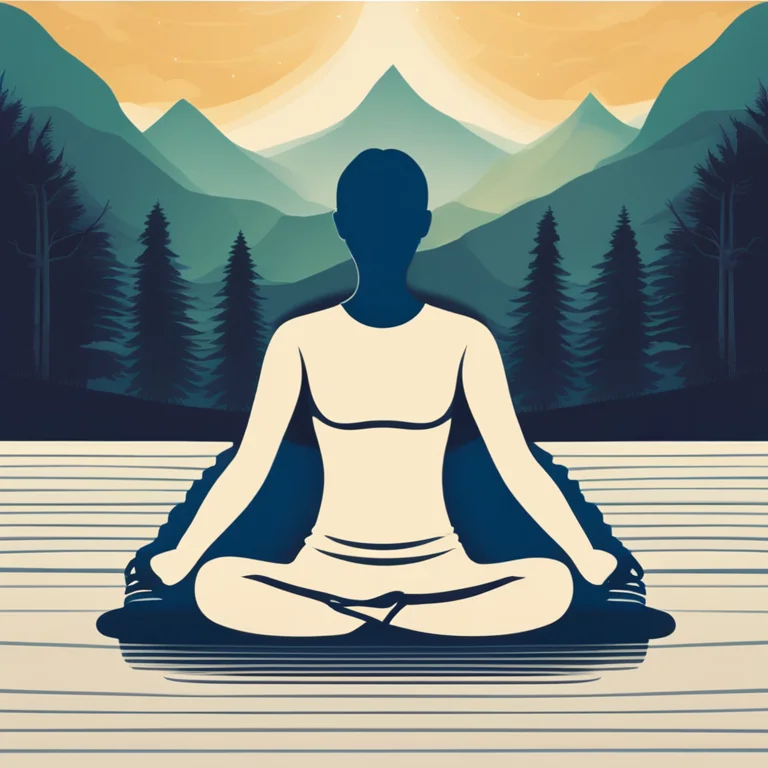
Breath Mastery for Mindful Meditation
Discover the role of breathwork in deepening your meditation practice for enhanced inner tranquility and focus.
article by Hina Kurosawa
The Essence of Meditation Breathing
Meditation breathing is an essential aspect of mindfulness practices, acting as a bridge between the body and the mind. This age-old technique not only provides the oxygen our bodies require but also brings a heightened level of awareness to the present moment. In a world that's increasingly fraught with distractions and stress, mastering breathing for meditation can offer a sanctuary of calmness and control. By consciously manipulating our breath, we can alter our emotional states, reduce anxiety, and achieve a deeper state of relaxation, making it an indispensable tool for modern living.

The Impact of Breathing on Physiology
Breathwork in meditation isn't merely for the sake of ritual; it has tangible physiological impacts. Deep, conscious breathing is known to trigger the parasympathetic nervous system, which promotes a state of rest and digest. This counteracts the fight-or-flight response associated with stress and anxiety. Furthermore, as we enter 2024, scientific studies continue to support the notion that deliberate breath control can improve cardiovascular health, boost immunity, and enhance the efficiency of our respiratory systems. By making conscious breathing a staple in our meditation practice, we are investing in our overall well-being.

A Guide to Meditation Breathing Techniques
Various meditation breathing techniques exist, each with specific benefits. One widespread practice is diaphragmatic breathing, which involves deep inhalations expanding the belly rather than the chest. This promotes maximum oxygen uptake and is conducive to relaxation. Another method is the 4-7-8 technique, where you inhale for four counts, hold for seven, and exhale for eight. This helps in reducing anxiety and preparing the body for sleep. Alternative techniques such as alternate nostril breathing not only bring calmness but also enhance concentration and mental clarity.

Incorporating Breathing into Your Meditation Routine
Integrating breathwork into your meditation routine requires consistency and patience. Begin by setting aside a few minutes each day in a quiet space where you can sit comfortably without interruptions. Start with mindful observation of your natural breath, gradually transitioning into deeper, more controlled breathing patterns. As you get comfortable, extend the duration and complexity of the exercises. With time, you may incorporate visualization and affirmations to complement the physical aspect of breathing, thus enriching your meditation experience.

Advanced Breath Mastery Techniques
Once you have a handle on basic meditation breathing, you might explore advanced techniques like pranayama—a series of practices found in yoga that manipulate breath to influence the flow of energy throughout the body. Techniques such as Kapalabhati (skull shining breath) and Bhastrika (bellows breath) can invigorate and heat the body, whereas Sitali (cooling breath) has a calming, cooling effect. It's crucial to approach these advanced practices with respect and ideally under the guidance of an experienced teacher.
Continual Learning and Breathwork Adaptation
As we look to the future, the evolving landscape of holistic health constantly brings new insights into the role of breathwork in meditation. Developing a practice that adapts to the latest research while respecting ancient wisdom is key. Regularly exploring new methods and attending workshops can keep your practice dynamic and responsive to your personal growth. With each breath taken in mindfulness, we step closer to mastering the art of breathing for meditation, unlocking deeper levels of spiritual and emotional freedom.
Published: 1/9/2024
Modified: 1/9/2024
More predictions
Come back here soon to learn more about yourself and your future


Serenity Through Meditation Retreats
Embark on a transformative journey at a meditation retreat to recharge, refocus, and reconnect with your inner self.


The Harmony of Meditation and Sleep
Discover the synergistic benefits of meditation for enhancing sleep quality and overall well-being in this insightful article.


The Tranquil Bridge: Meditation's Impact on Sleep Quality
Discover how meditation can enhance sleep quality, weaving a path to better rest and well-being